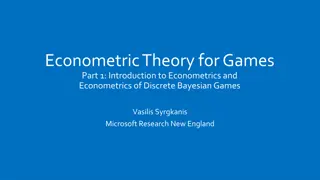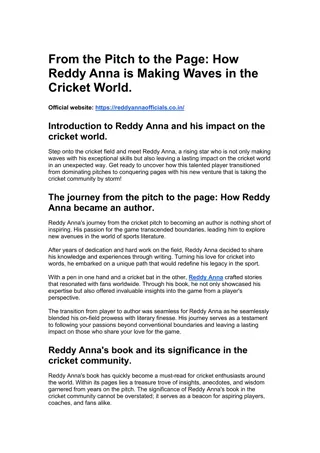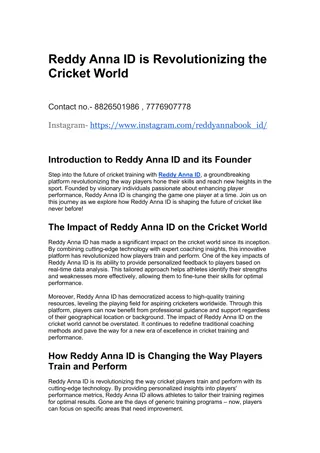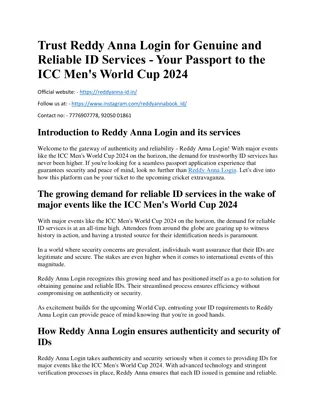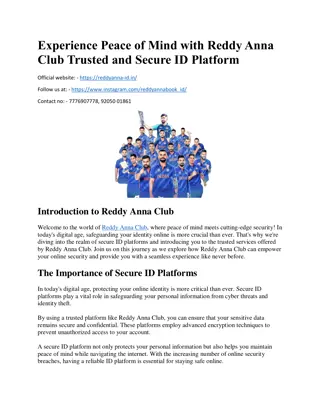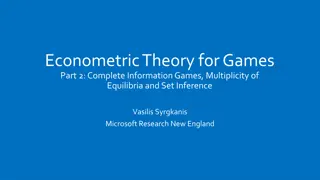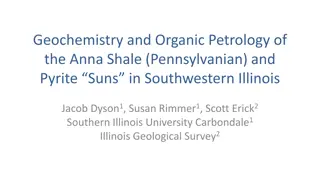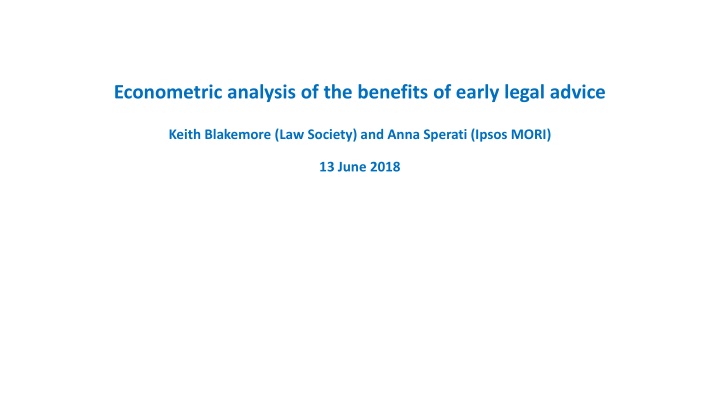
Analysis of Benefits of Early Legal Advice: Research Insights
Explore the econometric analysis conducted by Keith Blakemore and Anna Sperati on the benefits of early legal advice, focusing on resolution speeds and other indicators. Data from the Law Society/LSB 2015 Legal Needs Survey was utilized for the analysis of 2,757 issues related to legal advice-seeking behaviors and outcomes.
Download Presentation

Please find below an Image/Link to download the presentation.
The content on the website is provided AS IS for your information and personal use only. It may not be sold, licensed, or shared on other websites without obtaining consent from the author. If you encounter any issues during the download, it is possible that the publisher has removed the file from their server.
You are allowed to download the files provided on this website for personal or commercial use, subject to the condition that they are used lawfully. All files are the property of their respective owners.
The content on the website is provided AS IS for your information and personal use only. It may not be sold, licensed, or shared on other websites without obtaining consent from the author.
E N D
Presentation Transcript
Econometric analysis of the benefits of early legal advice Keith Blakemore (Law Society) and Anna Sperati (Ipsos MORI) 13 June 2018
Aims of the research The initial aim of the research was to assess the full benefits of early professional legal advice. However, the data available meant that at this stage we had to focus on the speed of resolution of issues. Other indicators of the benefits of early advice tried were: People s satisfaction with the final outcome of issues but satisfaction was often correlated with whether issues were resolved in people s favour or not The monetary benefits of early advice but significant additional data would have needed to have been acquired, particularly on the knock-on effects of issues being resolved early The analysis of was undertaken by Ipsos MORI and the Law Society Research Unit
Main dataset used We used data from the Law Society/LSB 2015 Legal Needs Survey http://www.lawsociety.org.uk/support-services/research-trends/largest-ever-legal-needs-survey-in- england-and-wales/ Fieldwork undertaken 1 October 2015 24 December 2015 29 different types of issue covered Responses from 8,912 individuals in England & Wales Data on 16,694 issues in total Respondents recruited from the Ipsos MORI online panel Data not weighted at respondent level although corrections applied where certain issues were deliberately over-sampled in order to achieve sufficient sample sizes
Dataset used for this analysis Data used for a subset of 17 issues, where there was sufficient sample sizes sufficient questions were completed on date of issue first occurring date when legal advice obtained date of resolution of issue other controlling factors used in the analysis Data on 2,757 issues therefore used in this research
How issues were resolved, and how many issues people sought legal advice for Resolution paths Resolution paths Freq. % 1. Did nothing/Took no action 2. Dealt with it myself without help 3. Dealt with it myself with the help of family or friends 4. Obtained professional legal advice/assistance/help 5. Tried but failed to get professional legal advice then dealt with it myself 6. Tried and failed to get professional legal advice and then did nothing 7. Tried to handle alone then obtained professional legal advice 1,331 3,021 1,429 2,237 408 268 587 14 33 15 24 4 3 6 Total 9,281 100 Contacted advisor Contacted advisor Freq. % No Yes 6,457 2,824 70 30 Total 9,281 100
Definition of early legal advice No accepted definition of early legal advice exists Based on inspection of the data, we defined early legal advice as professional legal advice received within 3 months of the issue first occurring Definition was also checked that it made sense in terms of Law Society experts experiences of dealing with legal issues Breakdown of data between issues where early advice received, and issues where early advice not received Time of advice Time of advice Freq. % 0-1 month >1 up to 3 months >3 up to 6 months 6 months-5 years 1,407 771 142 437 51 28 5 16 Total 2,757 100
Methodology 2 main aspects to the analysis: (1) Survival analysis Econometric/statistical technique that shows how the probability of an issue being resolved varies according to the time since the issue first occurred (2) Hazard model Econometric/statistical technique that uses a blunter measure of time than the survival analysis (eg whether advice was received within 3 months, or not), but more systematically controls for other factors that could be affecting the probability of an issue being resolved The two approaches are complimentary
Survival analysis Kaplan-Meier curves Kaplan-Meier curves show probability of surviving an event, where in this case the event is an issue being resolved. The curve can therefore be seen as the percentage of people at various times since the issue first occurred, who have not resolved their issue Curves show that people who received early advice are significantly more likely to have resolved their issue at each point after the issue first occurred ie the (blue) early advice curve is significantly below the (red) no early advice curve. On average, a quarter (25%) of people who received early professional legal advice had resolved their problem within 3-4 months of the problem first occurring, whereas for people who did not receive early legal advice it was not until 9 months after the issue had first occurred that 25% had resolved their issue
Hazard model Model structure Dependent (left-hand side) variable = Probability of people resolving their issues Independent (right-hand side) variables: Whether people received early advice, or not 1/0 variable, where 1=received advice within 3 months of issues first occurring, and 0=received advice after 3 months of issues first occurring Controlling factors Severity of people s issues On a scale 1-20, where 1-5=low severity, 6-10=fairly low severity, 11-15=medium severity, and 16-20=high severity People s knowledge of legal rights Categorical variable, where categories are no significant knowledge , some knowledge , and significant knowledge People s age group split into under 25-44, 45-74,75+ People s qualification level split into (1) degree, (2) A levels/GCSE/apprenticeship/other, (3) none Issue type Dummy variables for each of the 17 issue types, to control for any differences between issues Note: The analysis of categorical variables, in a regression context, implies the choice of a reference category. This is used to make comparisons, for example in the early advice regressions the reference category is the first subgroup of each variable.
Hazard model Cox regression results ` Variable hazard ratio p-value significant at 95% LCI UCI no early advice no early advice 0.81 0.81 0.002 0.002 0.705 0.705 0.925 0.925 yes yes issue type issue type 1 .93 1 .93 0.78 0.78 0.84 1 .57 1 .57 1 .24 1 .01 0.92 1 .66 1 .66 0.84 1 .1 2 0.78 0.77 1 .54 1 .54 1 .20 1 .96 1 .96 0.84 0.000 0.000 0.051 0.051 0.375 0.002 0.002 0.1 76 0.91 7 0.489 0.000 0.000 0.260 0.462 0.1 94 0.097 0.003 0.003 0.257 0.000 0.000 0.290 1 .525 1 .525 0.605 0.605 0.576 1 .1 87 1 .1 87 0.906 0.799 0.724 1 .307 1 .307 0.625 0.828 0.536 0.558 1 .1 59 1 .1 59 0.874 1 .552 1 .552 0.61 5 2.447 2.447 1 .001 1 .001 1 .231 2.074 2.074 1 .709 1 .284 1 .1 67 2.1 21 2.1 21 1 .1 35 1 .51 4 1 .1 35 1 .049 2.056 2.056 1 .655 2.477 2.477 1 .1 56 Had a consumer problem Had a consumer problem Got into debt/money problems Got into debt/money problems Legal problems with mental health issues Problems with a landlord Problems with a landlord Home repossessed/faced eviction from a rented property yes yes yes yes no yes yes no no no yes yes no no no no yes yes no yes yes no Disputes with neighbours Problems following a relationship breakdown Benefits Benefits Discriminati on Legal problems with children Immigration problem Domestic violence Homelessness Homelessness Been treated badly by the police (police misconduct) Problem with employer Problem with employer Clinical negligence Issue severity Issue severity from 6 to 1 0 from 6 to 1 0 from 1 1 to1 5 from 1 1 to1 5 from 1 6 to 20 from 1 6 to 20 0.71 0.71 0.68 0.68 0.62 0.62 0.001 0.001 0.000 0.000 0.000 0.000 0.577 0.577 0.556 0.556 0.503 0.503 0.875 0.875 0.835 0.835 0.759 0.759 yes yes yes yes yes yes Qualifications Qualifications 0.98 1 .03 0.778 0.874 0.887 0.71 3 1 .094 1 .489 some none no no Age Age 45-74 45-74 75+ 0.86 0.86 0.56 0.007 0.007 0.085 0.777 0.777 0.287 0.961 0.961 1 .084 yes yes no Whether the issue is legal or not Whether the issue is legal or not 1 .05 0.356 0.942 1 .1 81 no no Knowledge of legal rights Knowledge of legal rights 0.95 0.92 0.67 0.67 0.550 0.324 0.000 0.000 0.799 0.776 0.562 0.562 1 .1 27 1 .088 0.805 0.805 Mostly Partly no no yes yes Not at all Not at all F-test on the equality of legal advice coefficients Chi2=9.53 294.390 p-value=0.0020 0.000 LR chi(28)
Hazard model Model results Whether people received early advice, or not Issues where early advice was not received, were on average 20% less likely to have been resolved at any point in time after issues first occurred Controlling factors Severity of people s issues High severity issues were significantly less likely to be resolved early. If an issue is high severity then it is 38% lesslikely to have been resolved at any point in time than a low severity issue People s knowledge of their legal rights People with no significant knowledge of their rights, were significantly less likely to resolve their issues early. If a person had no significant knowledge of their rights, then they were 33% less likely to have resolved their problem at any point than people with significant knowledge of their rights. The importance of this variable potentially indicates the benefits that could arise from legal education programmes People s age group People in the 45-74 age group were significant less likely to resolve their issues early, whereas people in the under 45 age group were more likely to resolve their issues early. Even after controlling for the above factors, issues that are on average more likely to be resolved early were: consumer problems, issues with a landlord, welfare benefits issues, homelessness, problems with employers The only issue that was less likely than the average to be resolved early was debt problems.
Main conclusions The analysis shows that early professional advice has a significant effect on the speed of resolution of people s issues. Controlling for other factors that affect speed of resolution, issues where early advice was not received, were on average 20% less likely to have been resolved at any point in time after issues first occurred. Speed of resolution of issues is, not surprisingly affected by the severity of issues. People s knowledge of their legal rights has a significant effect on the speed of resolution. If a person had no significant knowledge of their rights, then they were 33% less likely to have resolved their problem at any point than people with significant knowledge of their rights. The importance of this variable potentially indicates the benefits that could arise from legal education programmes.
Possible further analysis Repeat analysis with data from the planned 2018/19 Law Society/LSB Legal Needs Survey, to see if the above results were significantly affected by using a panel. Repeat analysis for individual issue types, to further investigate the differences between issues, as the nature of issues is an important determinant of speed of resolution Quantify the monetary benefits of early advice. (However, potential problems in assigning monetary values to benefits. Analysis may therefore need to just focus in certain areas eg health care benefits, or use indicators of the potential benefits)
Download of report/Contact details Download of report http://www.lawsociety.org.uk/support-services/research-trends/research-on-the-benefits-of-early- professional-legal-advice/ Contact details Keith Blakemore Senior Economist Law Society Research Unit keith.blakemore@lawsociety.org.uk Anna Sperati Senior Statistician Ipsos MORI anna.sperati@Ipsos.com


